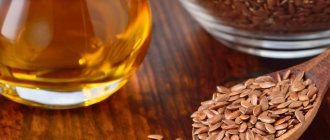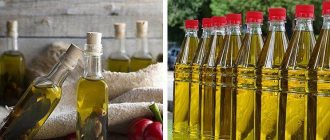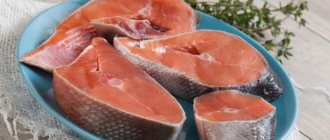Are you interested in exploring popular myths and searching for the truth? Which oil is better for frying without harm to health is a very interesting question! Let's consider it fully, modernly and to the point. Let's soberly evaluate the two sides of the right choice based on scientific data.
First of all, let's answer 2 questions.
The first is about the composition of the oil in principle.
Which oil is best to introduce into your diet every day, and which one would be better to avoid - regardless of the question of whether to fry with it or not. This is determined by the initial set of fatty acids (hereinafter FA). Everyone knows omega 3-6-9, as well as saturated fatty acids. Compounds that are unsafe for health will cause the same harm to health in oil of any temperature.
Second: what fat is safe especially for frying.
That is, which product does not form terrible trans fats at high temperatures? Unfortunately, there is not even a grain of exaggeration in the bright adjective. These substances cause direct damage to the heart, blood vessels, liver and bile ducts of the human body.
Interesting articles about the benefits and harms of miracle products!
- Ghee: superfood or hype? How to eat it, can it be fried, how much to eat - all the details in one review
- MCT Oil or Medium Chain Triglycerides: What are they, what are their benefits, and how do you eat them?
Want to clarify a certain issue about frying and fats in the diet?
Look for the item in the table of contents. We've covered all the most important things.
How to choose and why it’s so right
To get the correct answers, we need only 2 tables.
- About the structure of fatty acids in each product. That is, the original composition at room temperature.
- About the smoke points (burning points) of those vegetable and animal fats that are not harmful when cold.
Cutting-edge scientific views!
It is critical to our health that our favorite cooking oil does not contain excess omega-6 fatty acids. Excess of them in food provokes systemic inflammation. This means it harms all tissues and organs of the body.
We have long been paying attention to the imbalance of omega-6 fatty acids in traditional nutrition. Research on their harm is steadily increasing. The optimal ratio of omega 3 and 6 is 1:4. Unfortunately, in the modern diet the proportion is much worse. Until 1:16, or even 1:20.
Reviews from doctors are unequivocal: the pathological ratio of omega-3-6, the abundance of trans fats and processed food are the main factors in most diseases of civilization.
What foods are best to include in your diet to minimize the harm from an abundance of omega-6? Sardines, herring, red fish and fish oil will help you take care of your health.
Algorithm for choosing the best oil for frying - 2 steps
The correct algorithm for choosing the oil that is best for frying without harm to health.
- Does the oil smoke before medium temperature when frying? — We exclude it forever from roasting recipes.
- Fat does not burn, but contains a lot of omega-6 fatty acids? — We sharply reduce or exclude it from the menu.
- Is the product refined? — We remove it from the diet, regardless of behavior when heating.
And now about everything in order - in interesting details.
What oils and fats do people use today?
The composition of the oils used directly determines the health of the cardiovascular system.
To say that there are a lot of vegetable oils is to say nothing.
They are pressed from nuts, seeds and fruits. The culture of pressing is very ancient. Every nation has a centuries-old favorite among plant extracts.
So, Mediterranean residents do not know anything better than olive oil. Eastern Europe loves to fry with sunflower and corn. And Chinese and Korean cooking is an ode to the sesame product. At the same time, in the most developed countries, oils from coconut, grape seed, almond and avocado come into trend every now and then.
The ancient tradition of frying pork and lamb in animal fat is still alive. And, of course, creamy and baked goods, where would we be without them? After all, we all remember our grandmother’s fried pickles. In addition, ghee is gaining a foothold in the market. And it appeared for a reason, but with a loud claim to superfood straight from Ayurveda.
How not to get lost in diversity? Should we just follow tradition and availability and not pay attention to scientific reviews about the dangers? No, this approach is not the best for health.
What are the Slavs wrong about: the view of modern science
We will answer immediately for all Slavs!
Is it possible to fry in sunflower oil? No you can not. And the point is not whether it is refined or not. And you don’t have to check the smoke point. The main reason why you need to limit this fat is the poor composition of fatty acids in omega 3 and 6. Alas, corn can also be included here as sources of harm to health. And also fragrant sesame.
Since we ourselves are not dogmatists, we consider it possible to occasionally flavor food with the usual fat. For example, in a salad according to grandma’s recipe for the sake of flavor, exclusively in unrefined form.
But consuming these oils every day, as well as frying with them, is a bad choice for those who strive for active longevity. Omega-6 FAs in them are significantly more than 30%. This increases the imbalance of inflammatory substances and is potentially dangerous for the health of the heart, blood vessels and the body as a whole. More about this below.
Selection and storage
How to choose quality sunflower oil
When figuring out which sunflower oil is best for frying, you need to learn how to choose it in the store. It all depends on the goals and how exactly you will use it. It is clear that the question of frying is quite complex; we will answer it below. Unrefined varieties are more healthy, they contain more vitamins and other useful substances. Therefore, for cosmetic purposes, for example, for masks, wraps, it is better to take oil that has not undergone the purification process. However, there are other options.
- For children under two or three years of age, it is generally better not to use unrefined vegetable oil. Moreover, this applies to both cooking and cosmetic procedures.
- Please note that the oil in the bottle should be completely clear, regardless of the type. That is, cloudiness, ugly flakes at the bottom, all this is a sure sign to buy something else.
- When choosing in a store, you will hardly be able to try the product. However, at the market they may well give you a taste of what you buy. It should not have any bitterness.
- You cannot purchase bottles from a display case that have been exposed to direct sunlight for a long time or simply exposed to light. In such a product, mechanisms have already been launched that destroy vitamins and other useful components.
- It is not recommended to be fooled by bright signs about the presence of increased levels of “female” vitamin E. Most likely, it was introduced artificially, so it will not be absorbed as it should be.
- Always read what is written on the label if you want to get natural sunflower oil. Under the term “vegetable”, the manufacturer sometimes hides mixtures with other species, for example, with cheaper rapeseed.
Last but not least, what you will have to check when purchasing is the integrity of the packaging and the lid of the container. In addition, check information about expiration dates, production methods, compliance with GOST, and degree of purification.
Proper storage
Plastic is not the best solution for making containers for storing such a product. However, to reduce the cost of the product, the manufacturer most often bottles it in such containers. There is no need to be upset. To preserve it for a long time, simply pour the product into a glass container. If possible, choose dark (brown or green) colored containers. This will protect it from exposure to direct sunlight, and therefore from premature destruction of vitamins.
- Unrefined can be stored for 4-6 months.
- Refined varieties are stored longer - about 7-11 months, sometimes up to a year.
Usually the manufacturer writes on the label that the product is suitable for use for one and a half to two years. However, it is not recommended to use oil that has been left unopened for more than a year. If it does not cause harm, there will be no benefit from it, since most of the useful compounds will have already been destroyed by that time.
In addition, when exposed to light, fat will go rancid faster. Therefore, it is better to put the jar or bottle in a cabinet or pantry where the sun's rays do not penetrate. The best temperature for storage is 4-22°C. It is better to put unrefined in the refrigerator, where the temperature is cooler. The same applies to open containers.
Common myths about unrefined sunflower oil
According to statistics, in the capital of our country alone, more than two hundred and fifty tons of sunflower oil in total are consumed during the year. Moreover, more than half of this amount is unrefined. Despite this, many still believe in the myths and legends that circulate among people about this product.
Terrible toxins
The first myth is the record content of toxins in sunflower oil. In fact, there is some truth in this, but it does not depend on the type of cleaning, but rather on the type, quality and manufacturer you choose. In addition, dangerous toxic substances are contained to varying degrees in any plant product. Aldehydes and ketones, which scare the yellow press, are actually released during improper storage, when the product begins to oxidize uncontrollably.
Another substance to be wary of is benzopyrene. It is formed in the seeds during improper drying, and then gets out of them into the oil. However, almost all production facilities in modern realities already have clear mechanisms for testing raw materials. They will not allow dangerous products to enter even the pressing workshop, not to mention store shelves. But it’s better to refrain from buying unrefined oil from strange sellers on dirty market stalls with greasy watering cans, as there may be not only toxins there.
The danger of oncology
Many people say that when frying in sunflower, substances that provoke cancer begin to form. They are called carcinogens (specifically peroxide), and are released when fatty acids begin to break down under the influence of oxygen, heat and light.
However, this is actually quite a controversial issue. Scientists have found that any oil oxidizes in light, but it does not contain dangerous amounts of peroxides. Moreover, an experiment was conducted with many hours of slow boiling, in which the product was not brought to the smoking point. After ten hours of treatment, the level of carcinogens was measured and it remained within the same limits as before the experiment.
Refined vs unrefined
A common myth is that processed oil no longer contains any beneficial substances. Therefore, you need to buy only unprocessed, and even with a strong taste and smell. However, all the valuable substances that are in unrefined will become real poison during heat treatment. Therefore, it is better to choose the second one for frying.
Deodorized refined oils are not for salads
Many believe that the light, beautiful liquid in the bottle is intended exclusively for frying, and consuming it raw is strictly not recommended. In fact, it makes no difference whether you pour peeled or unpeeled product onto your cucumbers and tomatoes. Of course, there can be no harm from refined food, although it may not bring any particular benefit.
Which oil is better to choose for frying?
In the 20th century, science was genuinely wrong about the enormous damage caused by cholesterol and saturated fatty acids. Therefore, doctors' advice excluded animal fats from the diet. Butter, ghee, pork and beef fat were banned due to supposed harm, although they were highly valued by our ancient ancestors during severe cataclysms.
Today scientists admit they were wrong. Saturated fats are needed in moderation. And the intake of cholesterol from food does not have a significant effect on the formation of cholesterol plaques inside blood vessels. Of all the factors leading to atherosclerosis, ingested cholesterol has no more than 25% influence.
Moreover! The cause of plaque formation is not the cholesterol itself circulating in the blood. The body simply patches the vascular wall with cholesterol in the place where there is severe inflammation.
It is this inflammation - systemic, age-related - that brings the most dangerous diseases closer to us. And the body is amazingly intelligent! It resists inflammation along the vascular wall to the last. And therefore, with almost any diet, it will itself produce the missing cholesterol.
Systemic inflammation is largely caused by imbalances in nutrition. First of all, there is a disproportion of omega-3 and omega-6 FAs, which we already discussed above.
Here's the best way to change your diet for anyone who wants to achieve health and longevity.
- Remove oils from the diet that contain a lot of omega-6 fatty acids
- Use only those with omega-6 FA up to 30%
- Saturate your diet with products containing omega-3 fatty acids
The latter, by the way, is not so easy to do. It is better to act for sure - for example, drink 1-3 teaspoons of high-quality fish oil daily.
Let's evaluate popular vegetable oils for their omega-6 FA content. Infographics and tables will help us understand which ones to abstain from and which ones to check for their smoke point in order to understand whether it is possible or not to fry with this lubricant.
Fats that should not be eaten
Table No. 1. What oils should you not use for frying or cooking frequently? Omega-6 FA content is more than 30%. They are directly harmful to health.
| Oil name | Which omega-6 fatty acids are abundant? |
| Sunflower | Linoleic – 54% |
| Corn | Linoleic – 45% |
| Sesame | Linoleic – 44.5% |
| Pumpkin seed oil | Linoleic – 39% |
| Rapeseed oil | Erucic acid – 50% Linoleic acid – 23% |
| Grape seed oil | Arachidonic – 72.5% |
| Hemp oil | Linoleic – 55% |
| Castor | Palmitic – 90% |
| Walnut oil | Linoleic – 50% |
| Mustard oil | Erucovaya – 50% |
| Soy | Linoleic – 49% |
| Wheat germ oil | Linoleic – 44% |
Fats that are best consumed frequently
Table No. 2. These fats can be consumed frequently and correctly, because... Omega-6 in them is less than 30%. They are not harmful to health.
| Oil name | There are many useful LCDs |
| Olive: full review - here | Oleic – 80% Polyphenols |
| Coconut: read how to eat it | Lauric – 47% |
| Peanut | Oleic – 54% |
| Apricot kernel oil | Oleic – 60% |
| Avocado oil: read about the superfood in detail | Oleic – 58% |
| Cacao butter | Oleic – 43% |
| Peach kernel oil | Oleic – 61% |
| Almond oil | Oleic – 74% |
As you noticed, it is oleic FA that is the most valuable. It is commonly known as omega-9. And it is also the key advantage of olive oil, which is so loved by long-livers of the Mediterranean.
You can fry healthy dishes with olive oil without any problems, although there are more suitable analogues.
Let us separately discuss the features of lauric acid. In general, this saturated fatty acid is beneficial for the immune system, intestines, skin and lipid profile in human blood. A small possible harm from it is increased thrombus formation. To reduce the risk, it is better to use a coconut product together with an oil that is high in oleic acid - the already described olive oil.
Our main healthy fats are coconut and extra virgin olive oils.
Coconut oil: suitable for frying foods in a balanced diet without harming your health
Butter and flaxseed oils: it is possible or better to refuse
In terms of the composition of fatty acids, whipped cream fat is a very interesting product. It balances on the brink and contains equal amounts of harmful palmitic and beneficial oleic fatty acids (30% each). Treat it in moderation: eat occasionally. In addition, it is beneficial to melt butter over low heat. This will give us ghee or ghee that can be used for frying due to its high smoke point.
Flaxseed oil is another interesting story. It contains many valuable omega-3 fatty acids. Here is the proportion of the composition:
- Oleic acid - 20%
- Linoleic – 37%
- α-linolenic – 56%
- γ-linolenic – 15%
Unfortunately, a high proportion of α-linolenic FA is not a guarantee of health improvement. How effectively your body synthesizes the necessary omega-3 compounds DHA and EPA from it is a question for individual genetics. We believe that it is much better and more convenient to obtain ready-made DHA and EPA from fish oil.
Ghee or butter
Previously, it was believed that frying in butter was very harmful. It is useful not only fresh, but also suitable for frying. In addition, it contains vitamins E and A, linolenic acid, which affects the process of weight loss and reduces inflammatory processes. Butter contains 68% saturated fat and 28% monounsaturated fat, with a smoke point between 120-150 degrees.
You can purchase it or prepare it yourself. To do this, good butter (homemade, from cows that ate grass, not animal feed) is melted over very low heat, and then gradually brought to a boil. First, the water evaporates from the mixture, then the protein and sugar darken and stick together, and the butter becomes dark golden brown.
Smoke point of vegetable oils - table
From 120 to 170°C - the average temperature in the pan during frying fluctuates in this range. Sometimes it can jump to 200°C and above.
Oils that burn at such temperatures not only lose their beneficial properties, but also form toxic carcinogenic compounds. The health hazards from using such oils include:
- Increased calorie content of the dish, which is especially important when losing weight;
- Reducing possible benefits. We assume that we have selected the correct composition of the liquid crystals according to the recommendations above.
- Direct damage to the body. Everything that burned went into our stomach.
Conclusion: it is best to fry in healthy oil with a burning threshold of 170°C.
A table for healthy vegetable and animal fats will help you quickly navigate. It's easy to use. If the smoke point is more than 170°C, you can fry with this oil without harm to health. Carcinogens are not formed. The undisputed champions are ghee and melted butter, lard and lard take an honorable second place, and olive products are in third place.
Table No. 3. Smoke points of popular fats. Anything below 170°C is harmful to health.
| Oil name | At what temperature does it burn, °C |
| Ghee and ghee | from 250 |
| Lard/fresh lard | from 182 |
| Coconut extra virgin | 177 |
| Olive extra virgin | 191 |
| Creamy | 165 |
| Peanut extra virgin | 168 |
| Flaxseed extra virgin | 107 |
What olive oil can you use for frying?
Disadvantage of the product: when heated, health-improving polyphenols are destroyed. If you forget about this, then there is little cause for concern. Moderate heating in a frying pan gives a temperature of up to 170°C. The smoke point of good extra virgin olive oil is 191°C.
Conclusion: frying does not provoke the formation of carcinogens in high-quality cold-pressed oil.
And refined olive fat burns at 240°C. But this “dead version” has a number of big “buts”, like all refined fats.
Objective reasons not to fry in unrefined oil
Now we understand that when unrefined oil is heated, no terrible carcinogens are released. So where does the advice not to fry in unprocessed oil come from? The only objective reason why you can refuse to fry with unrefined oil is that it loses its beneficial properties when the temperature reaches too high.
To some extent, such cooking can be called an empty translation of the product. No matter how high-quality the oil is, you will not get even half of the beneficial substances it contains if you use it incorrectly.
How to use unrefined oil correctly
There is such a thing as the “smoke point”. This is the heating temperature at which the oil begins to emit smoke. For refined products it is much higher, so they are used for frying without fear. For unrefined ones, it depends on the raw materials:
- peanut oil can withstand temperatures up to 190 °C;
- olive begins to smoke when heated to 170–180 °C;
- flaxseed can withstand the same temperature range as olive oil;
- mustard oil begins to smoke at 160 °C;
- sunflower is the most delicate, its “smoke point” is about 107 °C.
Is refined oil harmful and can it be used for frying?
The approach to a healthy diet is simple - it is better to exclude refining as a fact. Not for frying, not for salad, not for gravy.
The harm of refined oil is associated with several points.
- It no longer contains many useful natural compounds, led by healing polyphenols. Empty off-scale calories are the first, but not the last, disadvantage of the product.
- May contain hexane. This is the cleaner, originally from the oil industry, that is used in cleaning. It is toxic and hazardous to health.
- Contains spenders - dangerous compounds that provoke vascular atherosclerosis.
According to WHO recommendations, more than 4 g of trans fats per day is a risk zone for many pathologies. First of all, the heart and blood vessels are affected. Moreover, the concentration of trans fats after refining is much higher than in other colleagues in the workshop who were subjected to moderate heating. For example, ghee contains no more than 4 g of waste per whole 100 grams. And in refined oils - up to 25% by weight!
And although the smoke points of fats after refining are high, for us the issue of frying with them is not relevant. You can fry... But we try not to eat refined oils in our daily menu. The exception is preparations for the winter. Although for the tenets of anti-aging nutrition, this is a bad compromise.
Objective reasons not to fry in unrefined oil
Now we understand that when unrefined oil is heated, no terrible carcinogens are released. So where does the advice not to fry in unprocessed oil come from? The only objective reason why you can refuse to fry with unrefined oil is that it loses its beneficial properties when the temperature reaches too high.
To some extent, such cooking can be called an empty translation of the product. No matter how high-quality the oil is, you will not get even half of the beneficial substances it contains if you use it incorrectly.
How to use unrefined oil correctly
There is such a thing as the “smoke point”. This is the heating temperature at which the oil begins to emit smoke. For refined products it is much higher, so they are used for frying without fear. For unrefined ones, it depends on the raw materials:
- peanut oil can withstand temperatures up to 190 °C;
- olive begins to smoke when heated to 170–180 °C;
- flaxseed can withstand the same temperature range as olive oil;
- mustard oil begins to smoke at 160 °C;
- sunflower is the most delicate, its “smoke point” is about 107 °C.
The best way to fry food without harm to your health - 5 secrets
TOP 5 important nuances are easy to follow at home.
- Grease the pan as lightly as possible. A silicone brush or a piece of gauze according to grandmother’s behests: it doesn’t matter what will help us avoid unnecessary things.
- It is better to salt food at the end of frying. This way we avoid excess fat absorption into the product.
- If the oil starts to smoke, rinse the pan thoroughly. The next portion must be completely new, otherwise carcinogens will end up right on our plate.
- It is better to store all oils in the cold and dark, in a container with a tight-fitting lid.
- We use the next portion for frying once, even if it is rendered fat from the meat.
We hope you will easily implement advanced nutritional ideas into practice. Plus, now you know the science behind the most popular fats for longevity.
Save our colorful reminders for safe grilling. This is a modern answer to the question of which oil is better to fry without harm to health! Let us also recall that the most suitable methods for daily cooking of vegetables and meat are still boiling and stewing with the addition of water. Bon appetit and stay healthy!
Say thank you(16)
Toxic breakdown products of the oil itself are released
The products of smoking and burning produce toxic aldehydes, ketones and peroxides, which are products of the breakdown of fatty acids.
When toxic aldehydes enter the human body with food, they multiply their reaction activity, especially in the presence of enzymes inside the human body, which serve as highly effective catalysts for them.
Aldehydes quickly bind to hormones and proteins, disrupting and destroying metabolic processes in the human body. These chemicals can accumulate in the body and are irritating.
Ketones can enter the body through the skin and also have an irritating effect on the body.









